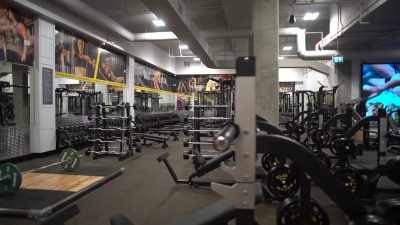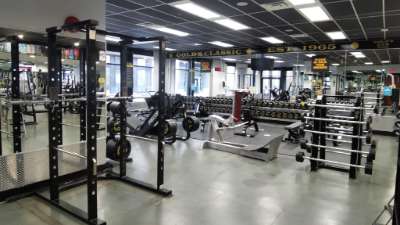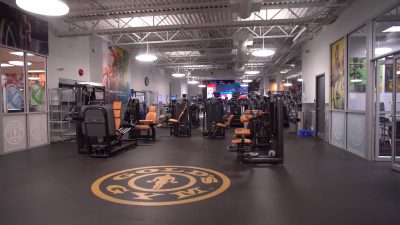Maybe you’ve reached a plateau in your workout. Or maybe your fitness goals seem to stay just out of reach. You’ve heard about “muscle confusion” and think that might be the answer to your problem.
Jeff Monaco, director of education for Gold’s Gym, sees people get that idea all the time. But the phrase “muscle confusion” leads to a lot of, well, confusion. Before you do anything, he says, you need to understand what muscle confusion really is, and what it could mean for you.
Clarity on muscle confusion
When you train, your body adapts, Monaco says — to lifting weights or doing cardio or any kind of training. Your body is a highly adaptable machine, and through repeating the same movements, it will start hitting plateaus and you’ll stop seeing results. People think that’s when you need muscle confusion.
But the idea behind muscle confusion is that you change your training at certain intervals to avoid plateaus.
The term “muscle confusion” first became popular with branded workouts that offered different ways to stay out of a rut by constantly changing your routine. It was used to sell the idea of constantly changing your workout to confuse the muscles and avoid plateaus.
But, Monaco says, different programs use the term in different ways. “Some of them want you to change every day. Others want you to change every three days.”
It’s true that you don’t want your body to completely adjust to your training. But changing your training too rapidly can be counterproductive. Changing your training every day, for example, can lead to overtraining. “We’re not giving the body time to adapt to the training stimulus,” Monaco says.
If you lift a certain amount of weight, you are minutely breaking down those engaged muscle fibers to make them stronger or better able to do what the body calls on them to do. But if you don’t give the body time to rebuild, those fibers get broken down even further.
“From a personal perspective, you’ll be more sore, not recovering as quickly, unable to train at the same intensity and having to take more rest,” Monaco says. “The body is not recovering as quickly.”
The importance of rest
Another way people incorrectly apply the concept of muscle confusion is by simply intensifying their existing workout. When they hit a plateau, they’ll up the weight or duration to get more results. Bad move, Monaco says. When you do that, you could again be denying the rest that your muscles need to grow.
“Rest is a vital component to training,” he says. “It often gets overlooked.” Rest is key to exercise success.
Always listen to your body. The period of rest after exercise is when your body is getting stronger and your cardiovascular system is improving.
“We coach our trainers to perform an assessment about how the clients are feeling today versus previous workouts,” Monaco says. Simple check-ins like “How are you feeling today?” or “Did you rest after the last workout?” actually are important steps to take to maximize your progress.
If someone is still sore, trainers will work on flexibility and mobility training instead of pushing the fatigued muscles.
The need for assessment
Monaco sees a lot of people who are stuck in the same routine. “They just want to come in and do the treadmill at the same speed every day,” he says. He’ll ask about their results and their targets. After talking with him, they’re in a better position to reach their goals.
He has seen how different people’s goals can be, and how much they crave variety. But you don’t need to rely on muscle confusion for that — just change your workouts.
How to change it up
“Generally, one or two changes can yield great results over time,” Monaco says. “For each type of training, resistance or cardio, pick one or two variables to change in your training program periodically instead of just changing everything or randomly selecting a different workout each day.”
Changing one or two variables allows for better monitoring of your training program to understand what works and what doesn’t. When you change multiple variables constantly, evaluating your progress is difficult.
Resistance training variables
- How much resistance
- Type of resistance (machines, free weights, bodyweight, etc.)
- Number of exercises
- Number of sets per exercise
- Number of repetitions per set
- The order of exercises
- Time under tension (how long a repetition takes)
- Surface (stable vs. unstable)
- Bilateral movement vs. unilateral movement (for example, both limbs together or one limb at a time)
- Muscle groups worked together
Cardio training variables
- Intensity of exercise (measured by heart rate or perceived exertion)
- Duration of exercise
- Number of exercise sessions
- Type of exercise (intervals, long distance, etc.)
- Mode of exercise (run, bike, elliptical, rowing, etc.)
“The major thing to think about with training is that there’s no one way to do it,” Monaco says. It comes down to understanding how your body is responding to training and understanding the different variables and components of training.
“‘Muscle confusion’ isn’t effective enough as a term to address the underlying principles it’s trying to describe,” he says. “You need to make changes to your training on a regular basis. It doesn’t have to be every day or every workout, but the body does adapt quickly, and it’s important to assess and reassess so you can keep working toward your goals.” Workout changes should be made in conjunction with thinking about your sleep patterns and nutrition.
Depending on your current state of fitness, your body generally adapts to training stimulus about every four to five weeks, Monaco says. “So I would recommend making larger changes — altering more than one or two variables — to the phase of training at those intervals, while changing one or two of the variables within those training blocks.” The key is that there should be a reason to change them. The idea is that you keep changing until you’re growing.
The more conditioned you are, the sooner you hit plateaus because your body is already closer to its full potential. Check your heart rate, while resting and during exercise, to get a good indicator of how your body is doing. “The range for a healthy resting heart rate varies but is around 60 to 80 beats per minute,” Monaco says. A sign of potential overtraining is if your resting heart rate is increasing with training. Resting heart rate generally decreases the more conditioned an individual is.
“How your heart responds is indicative of how your body is responding,” Monaco adds. And there’s nothing confusing about that.


 WEST BROADWAY
WEST BROADWAY UNIVERSITY MARKETPLACE
UNIVERSITY MARKETPLACE COQUITLAM
COQUITLAM LANGLEY
LANGLEY